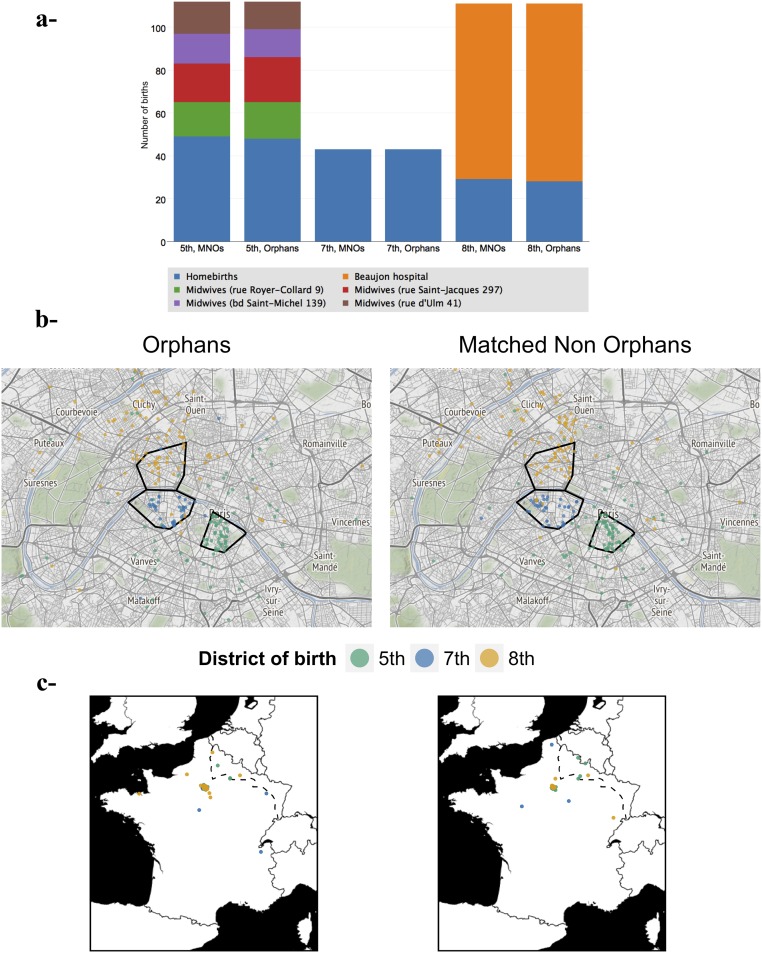Fig. S3.
Type of birth and home address of parents for orphans and MNOs born in three contrasted districts of Paris. For orphan/MNO pairs born in three districts of Paris (fifth, n = 112; seventh, n = 43; and eighth, n = 111) with contrasted delivery modes (hospital, midwife’s house, at-home births), the home address of the parents was computerized (n = 532). Addresses were geocoded using Google Maps API, called from R with the geocode function of the ggmap package (67). The addresses for which this geocoding failed were examined manually (n = 52): 33 streets whose name had changed since 1914 were identified by comparing 1914 and modern-day maps, and the Google Map geocoding was relaunched accordingly. Addresses in streets that had disappeared were geocoded manually (n = 7). Finally, addresses in streets that we failed to identify on 1914 maps were set at the district/town center (n = 12). (A) Number of hospital births, homebirths, and births at midwives’ houses for orphans and MNOs. (B) Districts with hospitals or midwives’ houses (i.e. the fifth and eighth districts) recruited women living in neighboring districts and suburban towns. In the seventh district all births were homebirths. The three selected districts are outlined in black. (C) Among parents domiciled outside Paris were war refugees who had settled in Paris but were still domiciled in their region of origin. (The dotted line shows the stabilized frontline from October 1914.)

